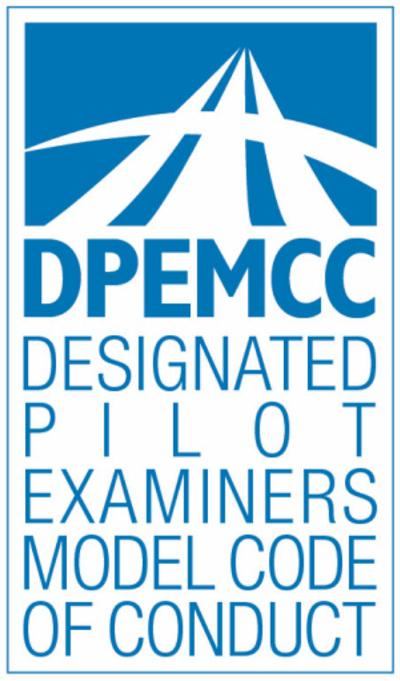The Code of Conduct Received Extensive Industry Review
The Designated Pilot Examiners Model Code of Conduct (DPEMCC) has been released by the project’s Permanent Editorial Board. Developed by a team of aviation professionals, and drawing upon decades of research and experience, the Code offers recommendations to advance professionalism and safety in the conduct of practical tests.

Support for the DPEMCC has been considerable. Sean Elliot, Industry Chair DPE Reform Work Group, and EAA Vice President, Advocacy and Safety stated, “Designated Pilot Examiners are the front line for aviation safety. Professionalism and ethical practice are a key part of the effectiveness of this community. This Code of Conduct hits all the right indicators of a true professional. The creators should feel proud that such a tool now exists within aviation.”
David St. George, DPE and Executive Director of the Society of Aviation and Flight Educators (SAFE) stated, “Professionalism in any field is by necessity aspirational – what we could and should be on our best day to fully express our mission. Carefully crafted, collaborative guidance, like the DPEMCC, inspires and calibrates our quest.”
W. Ashley Smith, President/Dir. of Operations of Jet Logistics and NBAA’s Domestic Operations Committee liaison remarked, “Consistency and standardization are critical items in order to keep training and checking activities at the highest professional level. It is my sincere hope that DPEs from coast-to-coast will not only read this Code of Conduct but take the time to put these initiatives into daily practice so as to give all pilot candidates the best possible experience.”
A professional code can help DPEs achieve new levels of expertise, and the DPEMCC is just such a tool, a set of guidelines that is adaptable to each examiner, whether employed in a training organization or working independently.
The DPEMCC:
- promotes DPE professionalism, safety, and DPE contributions to the aviation community and society at large,
- encourages the development and adoption of ethical behavior, personal responsibility, and good judgment,
- supports improved communications between DPEs, examinees, regulators, instructors, and others in the aviation industry, and
- promotes recognition of the DPE as a highly respected professional.
Most pilots look to DPEs as experts who exemplify the highest standards of fairness, professionalism, and representation of the Administrator. The manner in which DPEs undertake their responsibilities, and the examples they set, impact the safety culture of aviation. The Code of Conduct will help DPEs serve as role models for the entire aviation community.
The Code of Conduct received extensive industry review, including input from a number of highly respected examiners, and presents a vision of flight examination excellence within its seven sections: (1) General Responsibilities of DPEs; (2) Flight Test Safety; (3) DPE Training and Proficiency; (4) Security; (5) Environmental Issues; (6) Use of Technology; and (7) DPE Professionalism and Safety Culture. The Code of Conduct is a living document and will be periodically updated to reflect changes in standards, practice, and the aviation environment.
The Designated Pilot Examiners Model Code of Conduct is the latest in a family of similar codes including the Aviators Model Code of Conduct, Aviation Maintenance Technicians Model Code of Conduct, Flight Instructors Model Code of Conduct, the Glider Aviators Model Code of Conduct, The Helicopter Pilots Model Code of Conduct, the Light Sport Aviators Model Code of Conduct, the Seaplane Pilots Model Code of Conduct, the Student Pilots Model Code of Conduct and the UAS Pilots Code.
 SpaceX to Launch Inversion RAY Reentry Vehicle in Fall
SpaceX to Launch Inversion RAY Reentry Vehicle in Fall Aero-News: Quote of the Day (04.23.24)
Aero-News: Quote of the Day (04.23.24) Aero-News: Quote of the Day (04.20.24)
Aero-News: Quote of the Day (04.20.24) ANN's Daily Aero-Linx (04.20.24)
ANN's Daily Aero-Linx (04.20.24) Aero-News: Quote of the Day (04.21.24)
Aero-News: Quote of the Day (04.21.24)



